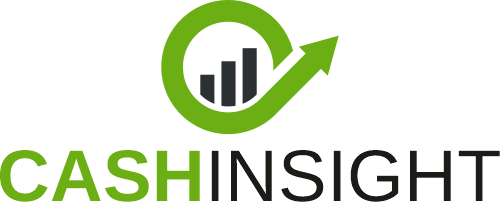The housing market has had a busy start to the year as buyers look to beat changes to stamp duty thresholds from April. However, it could be a year of two parts, with a corresponding slowdown in the market after those changes take place, pushing up the cost of buying a property.
We could be starting to see the effects of this already, based on the latest house price index from Halifax. The lender found that prices dipped by 0.1% in February, with demand starting to fade as the stamp duty window narrowed.
Under current rules, buyers only have to pay the controversial property tax on homes worth more than £250,000, or £425,000 for first-time buyers. These thresholds will drop to £125,000 and £300,000 respectively from 1 April.
Sign up to Money Morning
Don’t miss the latest investment and personal finances news, market analysis, plus money-saving tips with our free twice-daily newsletter
Don’t miss the latest investment and personal finances news, market analysis, plus money-saving tips with our free twice-daily newsletter
Despite February’s dip in prices, Halifax reported that market activity looks resilient overall, with activity levels comparable to before the pandemic. This has been helped by a slight loosening of affordability constraints. Mortgage rates are on a downward path and wage growth outpaced house price inflation last year.
However, Zoopla is warning that changing stamp duty thresholds could dampen demand, while the traditional spring flurry of property listings could push prices down. Its latest data shows growth dipped to 1.8% in February, down from 1.9% in January.
What’s happening with sold house prices?
Sold house prices are the most accurate indication of what is happening in the UK property market. The official figures published by HM Land Registry are the most authoritative source, however they come with a two-month time lag.
The latest report from HM Land Registry, published on 26 March, shows prices increased by 4.9% annually in January 2025. This brings the average property price to £268,548, which is around £13,000 higher than a year ago.
The time lag associated with this index means you might need to consider it alongside other sources to get an indication of current market conditions.
Major lenders like Halifax and Nationwide also publish trusted house price data, but this is based on the lender’s valuation at the mortgage approval stage. This can differ from the actual sale price, but the idea is that it is near enough to the end of the home-selling process to offer a more realistic snapshot than initial asking prices.
Property website Zoopla also publishes a house price index, which uses sold prices, mortgage valuations and data for agreed sales. We look at which house price index is best in further detail in a separate article.
|
House price index |
Report date |
Monthly change |
Annual change |
Average UK house price |
|
Figures shown cover January. February and March’s reports are not yet available. |
+0.2% |
+4.9% |
£268,548 |
|
|
Figures shown cover February. |
+0.4% |
+3.9% |
£270,493 |
|
|
Figures shown cover February. |
-0.1% |
+2.9% |
£298,602 |
|
|
Figures shown cover February. |
Largely unchanged month-on-month |
+1.8% |
£267,500 |
Regional house price variations
Of course, there are big regional variations but using the “house prices in your area” report from the Office for National Statistics can help you understand how prices have changed in your borough or local authority area.
The latest report from HM Land Registry suggests prices are growing at the fastest rate in Northern Ireland (9%), followed by Wales (6%), England (4.8%) and Scotland (4.6%).
Of the English regions, the North East is seeing the fastest growth (9.1%).
Meanwhile, London saw the lowest level of growth at 2.3%. Prices in London are particularly high, with the average house now costing almost £564,000. This suggests affordability limits have become stretched.
Different property types are also seeing significant variations in price. Data from Zoopla shows the gap between the value of the average house and the average flat widened to a 30-year high in January. A typical house is now 67% more expensive than a flat.
“The search for space over the pandemic boosted demand for houses, while concerns over the running costs of flats, such as service charges and ground rents, has acted as a drag on flat prices. Building safety is another factor impacting demand for some recently-built flats,” explained Richard Donnell, executive director of research at the property website.
Are property asking prices going up?
Asking prices are a useful barometer for market sentiment as it currently stands. These snapshots tend to be published only a few weeks after the data was recorded. The drawback is that asking prices don’t necessarily reflect the final sold price.
Rightmove’s house price index, based on asking prices, suggests house prices increased by 1.1% on a monthly basis in the first few weeks of March, in line with the long-term average for this time of year. On an annual basis, prices were up 1%.
“Historic averages show that this March is likely to be one of the strongest months of the year for sellers to spring into action. However, sellers can’t just rely on these historic averages for success, as this year they are facing a decade-high level of competition,” said Colleen Babcock, property expert at Rightmove.
“Those who are successfully finding buyers right now are working hard with their agents to price competitively and present their home in the best possible light,” she added.
Will house prices rise in 2025?
Zoopla is expecting house price growth to slow going forward, in part due to more properties coming onto the market between March and May.
Richard Donnell, executive director at the property website, said: “House price growth is set to moderate further as supply grows and the extra costs of stamp duty in England feed through into house prices.
“A slowing in house price growth is not a major concern although the market needs some growth in prices to encourage sellers to come to market and buyers to make realistic offers on homes for sale.
“There is plenty of demand for homes but also lots of choice. Households looking to sell their home in 2025 need to be careful when setting their asking prices if they are to attract sufficient demand to agree a sale. It’s important to seek the advice of local estate agents to inform the most suitable pricing strategy for every home.”
Although there could be a slowdown in the immediate aftermath of stamp duty changes, most experts believe house prices will rise in 2025 overall. Real estate consultancy Knight Frank has forecast 2.5% growth, while estate agent Savills has predicted 4%.
Naturally, there will be regional variations, with prices forecast to rise more rapidly in the north than the south. Affordability limits in the south are already overstretched, and stamp duty changes will have a bigger impact in the south overall (as house prices are higher).
Savills said it expects house prices to increase by 5% in 2025 in the North West, the North East, Scotland, and Yorkshire and the Humber. Prices in the East of England and the South West are forecast to increase just 2.5% during the year.



